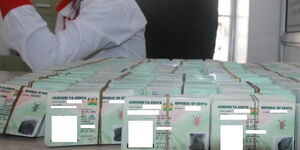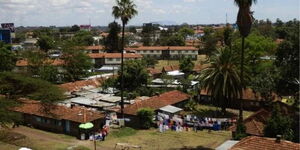Nairobi Governor Johnson Sakaja on Monday came under scrutiny after senators revealed a massive 51 per cent loss of all the water produced in the county.
While appearing before the Senate County Public Investments & Special Funds Committee, the governor was asked to explain the massive loss in the distribution channels, which cost the city Ksh8.6 billion.
"Governor, auditors say 51 per cent of water produced, worth Sh8.6 billion, simply vanished. How do we explain this to rate-payers?" the committee chair, Godfrey Osotsi, quipped.
In his defence, the governor faulted the previous administration, claiming that he had inherited a faulty infrastructure that required an expensive overhaul.
As such, he told the senators that his administration had allocated Ksh9.2 billion in the 2024/25 budget for the urgent repairs needed to minimise the loss.
"We inherited antiquated pipes and deferred capital works. We have now ring-fenced Sh9.2 billion in the 2024/25 budget for meter sealing, leak detection and pipeline rehabilitation, plus AFD and FD projects already underway," Sakaja said.
In addition to the Ksh9.2 billion, Nairobi Senator Edwin Sifuna questioned the governor over his debt recovery efforts, revealing that Ksh11 billion in receivables had remained outstanding for over 480 days.
"Sh11 billion sits in receivables over 480 days. Demand letters alone won't cut it. Where is the recovery plan?"
Sakaja responded that the county government was addressing the debt crisis by launching two new revenue regions and a GIS billing platform in February.
He claimed that all debts above Ksh1 million had since been handled by legal teams, and that 1,938 previously unbilled active accounts had been invoiced.
The senators' other concern was that salaries consumed 65 per cent of the revenue, nearly double the recommended 35 per cent.
Sakaja, on his part, claimed that his administration had introduced cost-cutting measures like a hiring freeze for non-critical positions and decentralised services to reduce overtime.
He further revealed the implementation of a cost-recovery tariff submitted to the Water Services Regulatory Board (WASREB) that should reduce the wage ratio to 45 per cent within twelve months.












